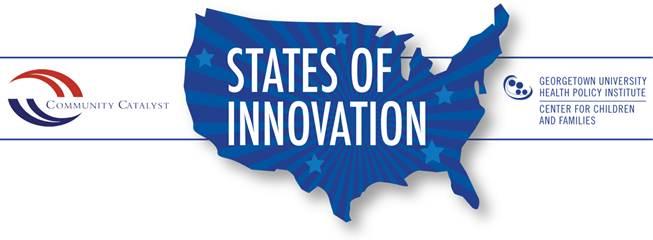
Paying Pharmacies Honest Prices for Prescription Drugs
As policymakers across the country look to balance their budgets, some are turning to Medicaid, recycling the same harmful policies they’ve used year-after-year: eliminating coverage for vulnerable Americans, restricting critical benefits like prescription drug coverage, imposing premiums on those who can’t afford them, and slashing already-low provider reimbursement rates.Community Catalyst and Georgetown University Health Policy Institute Center for Children and Families created the States of Innovation blog series to shine a spotlight on states that are trying to find a better way. We will highlight states that are pioneering new approaches to making Medicaid more sustainable without harming – and often by improving – care for the millions of vulnerable seniors, people with disabilities, children and low-income parents that rely on Medicaid.

The state of Alabama has pioneered a way to save millions of dollars in its Medicaid program by changing how it pays pharmacies for the drugs they provide to Medicaid patients.
Like 40 other states, Alabama used to reimburse pharmacies based on a pricing benchmark generated by prescription drug manufacturers, called Average Wholesale Price (AWP).
But documents made public in court cases have shown that drug manufacturers and others sometimes inflate their AWP list prices to incentivize pharmacies to buy their drugs. The manufacturers actually charge the pharmacy less than the published list price that Medicaid uses to reimburse the pharmacy for the drugs. For example, in Massachusetts from 1995 to 2003 the drug maker Warrick reported widely inflated list prices for an albuterol drug that was nearly seven-times the actual sales price. The pharmacies often reap a profit from this price “spread.”
Use of inaccurate, sometimes almost fictional list prices like AWP has led not only to overpayment but to outright fraud when companies lure pharmacies into favoring their products over competitors by increasing the profit margin. As a result of litigation on such pricing fraud, the main publisher of the AWP list (First Databank) ceased publishing it in September, 2011. However, this list price continues to be published by others, and as of now, 40 states and many private health plans continue to use this or other manufacturer generated list prices.
Alabama paves the way for a fairer – and more cost-effective - system
Alabama recently began reimbursing pharmacies based on an “evidence-based” benchmark, called Average Acquisition Cost (AAC.) It is based on an ongoing average of actual invoices of pharmacy purchases from drug manufacturers and wholesalers, which best reveals the actual cost of the drugs to the purchasing pharmacies. A dispensing fee is also paid to the pharmacy to cover the cost of pharmacist services and overhead.
Alabama’s Medicaid program has projected a 6.1 percent savings on its fee-for-service drug expenditures -- that amounts to $30 million in the first year --without affecting prescription drug benefits provided to Medicaid beneficiaries or impacting quality of care. Indeed, the president of the Medical Society of the State of Alabama affirmed that changing to AAC should not affect patients' access to care.
Three other states have followed Alabama’s lead: Oregon has implemented AAC pricing and expects to save $1.6 million, or 1 percent of its $160 million fee-for-service Medicaid drug expenditures. Idaho is in the process of implementing AAC, and expects to save $2 million in state general funds. And California has authorized a shift to AAC pricing as well.
CMS itself has also begun collecting drug cost data from pharmacy invoices nationally in order to assist states in evaluating their current payments systems. If CMS shares such information, it could help reduce the implementation costs to states, since they may not have to collect their own invoice data.
Private sector benefit
Alabama’s drug price information is available online here, and Oregon’s is published here. By making these regularly audited drug prices available to the public, these states and CMS can also make it easier for private insurance plans to adopt AAC and reduce their costs. Private plans will also be selling their products through the Affordable Care Act mandated Exchanges, often to low-income people not eligible for Medicaid or employer coverage. Since lowering pharmaceutical costs could help play a role in controlling premium costs, this would be of particular benefit to these low-income purchasers, and to the government, which will pay a sliding scale percentage of their premiums.
Pharmacy resistance
Some pharmacies have fought AAC pricing, claiming they cannot survive without the “spread” between what they paid for the drug and what they’re reimbursed from Medicaid. However, as court documents have revealed, many have been overpaid for years in a system with no transparency. If pharmacies were transparent about their actual cost of doing business—something they typically resist—and they could prove actual losses, the per-prescription dispensing fee Medicaid pays could be increased to cover those costs.
To find out more, see the AAC section of Community Catalyst’s new Medicaid Report Card.
